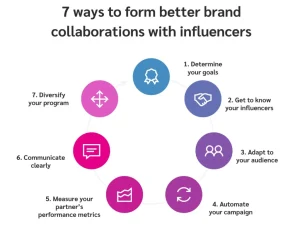Microlearning Strategies for Continuous Employee Development

Let’s be honest. The traditional model of employee training—you know, the one with day-long seminars and binders thick enough to stop a door—is cracking. It’s just not built for the pace of modern work. Employees are overwhelmed, attention spans are fragmented, and skills become obsolete almost as soon as you’ve learned them.
So, what’s the alternative? Well, think of it like snacking versus a seven-course feast. You can’t always sit down for a huge meal, but a well-timed, nutritious snack keeps you going. That’s microlearning in a nutshell. It’s the art of delivering bite-sized, focused chunks of information that employees can actually absorb and apply, right when they need it.
Why Microlearning is a Game-Changer for Development
The data here is pretty compelling. The Forgetting Curve, a concept from way back in the 1880s, shows we forget over half of new information within an hour if we don’t reinforce it. A day later? We’re down to about 30% retention. Ouch.
Microlearning fights this. By delivering content in small, repeatable bursts, it fits into the workflow instead of pulling people out of it. It respects the flow of a busy day. An employee waiting for a meeting to start can watch a 90-second video on giving better feedback. A sales rep on the train can review a quick infographic on a new product feature. It’s learning that meets people where they are.
Crafting Your Microlearning Strategy: A Practical Guide
Okay, so it sounds good. But how do you actually do it? Throwing a bunch of three-minute videos into a library and hoping for the best isn’t a strategy. Here’s how to build one that sticks.
1. Focus on One Thing at a Time (Seriously, Just One)
The biggest mistake is trying to cover too much. Each microlearning asset should have a single, crystal-clear learning objective. Instead of “Understanding Project Management,” create a two-minute module on “How to Write a Clear User Story.” Or a 90-second quiz on “The Three Key Questions for a Stakeholder Check-in.” This laser focus is what makes it so digestible.
2. Mix Up Your Media—Heavily
People learn in different ways. Relying on just one format is like only serving bread at a buffet. It gets boring, fast.
- Short Videos & Animations: Perfect for demonstrating a soft skill or a quick software tip.
- Infographics: Ideal for summarizing processes or data-heavy concepts.
- Interactive PDFs or eBooks: Great for checklists or quick-reference guides.
- Audio Clips or Podcast Snippets: Amazing for commuters or for reinforcing key messages.
- Mini-Quizzes and Flashcards: Essential for knowledge checks and combating that pesky forgetting curve.
3. Make it Accessible and “Pull-Based”
The old model was “push” – we push this training at you on this date. Microlearning thrives on “pull” – employees pulling the knowledge they need, the moment they need it. This means your content has to live on a platform they actually use, like your company intranet, a dedicated app, or even a Teams or Slack channel. It should be as easy to find as a Google search.
4. Weave it into the Workflow (The Magic Ingredient)
This is where microlearning transforms from a nice-to-have to a must-have. It’s about embedding learning directly into the tasks people are already doing.
Imagine a customer service rep on a call. A tricky situation comes up. Instead of putting the customer on hold and frantically searching a 50-page manual, they can quickly search a microlearning library and find a one-minute “how-to” guide for that exact scenario. That’s performance support. That’s real, continuous development.
Putting It Into Practice: Real-World Examples
Let’s get concrete. What does this actually look like across different business functions?
| Department | Microlearning Example | Format |
| Sales | Objection handling for a new product feature. | 90-second role-play video. |
| IT & Security | Recognizing a new type of phishing email. | Interactive quiz with real email examples. |
| HR & Compliance | Key points from the updated anti-harassment policy. | Animated infographic. |
| Leadership | Giving effective praise to a remote team member. | Audio clip with three actionable scripts. |
The Tools and The Mindset
You don’t need a massive budget to get started. Honestly, you can begin with tools you probably already have. Canva for graphics, Loom for quick videos, your existing LMS if it supports short modules. The tool matters less than the mindset.
The mindset is one of iteration. Launch a small piece of content. See how it’s received. Tweak it. Build another. It’s a continuous cycle of development for the development itself. You’re building a living library, not a static course.
A Final Thought: It’s About Culture
In the end, effective microlearning strategies for employee development do more than just teach skills. They signal a cultural shift. They tell your team that you value their growth enough to integrate it into the fabric of their day. That learning isn’t a separate, cumbersome event, but a natural, ongoing part of being a professional.
It’s a shift from seeing training as a cost to viewing it as the very fuel for adaptability and resilience. And in a world that won’t stop changing, that might just be the most important investment you make.







